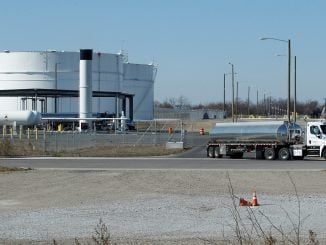
NEW YORK — The market’s spotlight was again on oil, where prices have plummeted because very few people are flying or driving, and factories have shut amid widespread stay-at-home orders. Global demand is set to drop to levels last seen in the mid 1990s. At the same time, oil producers can’t slow their production fast enough, and all the extra crude means storage tanks are quickly running out of room.
The cost for a barrel of U.S. oil to be delivered in June plunged 43% to $11.57. That’s the part of the market that oil traders are focused on and trading most actively. For oil to be delivered next month, which is when storage tanks could top out, the cost of a barrel stood at $10.01. A day earlier, it fell below zero for the first time, meaning traders paid others to take oil off their hands to get rid of the headache of finding where to store it.
Analysts consider prices for U.S. oil to be delivered in June and later as closer to the “true” price of crude, along with prices for international oils. They did not drop below zero, in part because the storage issues aren’t as pressing for them. But they also slid Tuesday on the same concern: A global economy incapacitated by the virus outbreak doesn’t need to burn as much fuel.
Brent crude, the international standard, for delivery in June lost 24.4% to $19.33 per barrel.
“I don’t think there’s enough time even before the June contract to solve the storage capacity issue, so you see the June contract coming down sharply,” said David Joy, chief market strategist at Ameriprise Financial.
Even with all the chaos in the oil markets, some signs of economic activity on the horizon were poking through elsewhere. The Senate approved a coronavirus aid bill worth nearly $500 billion that would provide more loans to small businesses and aid to hospitals. Georgia’s governor, meanwhile, announced plans late Monday to allow gyms, hair salons and other businesses to reopen as early as Friday.
Rising optimism among some investors that parts of the economy could reopen as infections level off have helped stocks rally recently, and the S&P 500 is up more than 22% since hitting a low in late March. The rally got its start after the Federal Reserve and Congress promised massive amounts of aid for the economy.
“It looks like we’re bending the infection curve, there are signs of economic reopening and the stimulus is there,” said Rob Haworth, senior investment strategist at U.S. Bank Wealth Management. “All of which are good signs for the markets where there’s a potential scenario where the economy starts to recover.”

